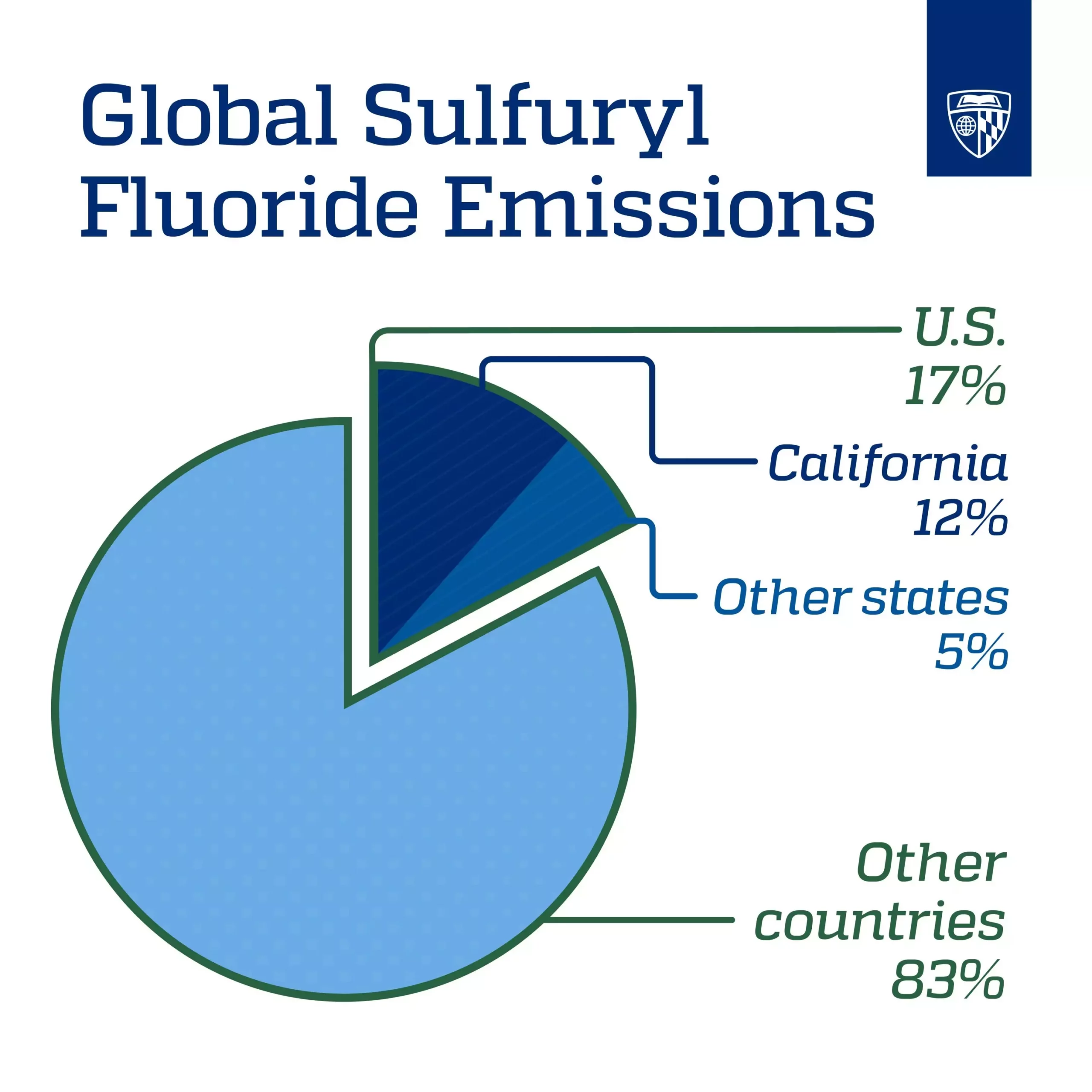California, a state known for its aggressive greenhouse gas reduction policies, is ironically the nation’s greatest emitter of one: sulfuryl fluoride. As much as 17% of global emissions of this gas, a common pesticide for treating termites and other wood-infesting insects, stem from the United States. The majority of those emissions trace back to just a few counties in California, finds a new study led by Johns Hopkins University. This unexpected revelation sheds light on a major environmental issue that has largely gone unnoticed in the state known for its environmental initiatives.
Miller and lead author Dylan Gaeta, a Ph.D. candidate at Johns Hopkins, analyzed more than 15,000 air samples collected between 2015 and 2019 by NOAA Global Monitoring Laboratory scientists. The researchers factored in wind speed, direction, and other meteorological variables to trace the chemicals back to their point of origin. The findings indicated that 60–85% of sulfuryl fluoride emissions in the U.S. come from California, primarily Los Angeles, Orange, and San Diego counties. This is alarming considering California’s commitment to reducing greenhouse gas emissions and achieving net-zero emissions by 2045.
The study revealed that the majority of sulfuryl fluoride emissions in California can be attributed to structural fumigation practices. This method involves sealing an infested structure with an airtight tent, pumping gas into the tent to eradicate the pests, and venting the gas directly into the atmosphere afterward. Roughly 15% of the emissions came from agricultural and commodities fumigation. The gas, once emitted, contributes to global warming by trapping heat in the atmosphere and sending it back down to the Earth’s surface.
While efforts to reduce greenhouse gas emissions often focus on carbon, sulfuryl fluoride poses a significant risk as well. The researchers stressed the importance of developing strategies to address this overlooked source of emissions. Despite being less harmful than previously banned fumigants, sulfuryl fluoride still contributes to global warming. California’s track record of innovative environmental initiatives can be leveraged to address this issue, but a more comprehensive understanding of the emissions and their impact is necessary to develop effective reduction strategies.
The unexpected findings of this study underscore the need for a more holistic approach to greenhouse gas emissions reduction in California. By identifying and addressing sources of emissions like sulfuryl fluoride, the state can further advance its environmental goals and contribute to global efforts to combat climate change. Collaboration between researchers and policymakers is crucial in developing effective strategies to mitigate the impact of these emissions on the environment.


Leave a Reply